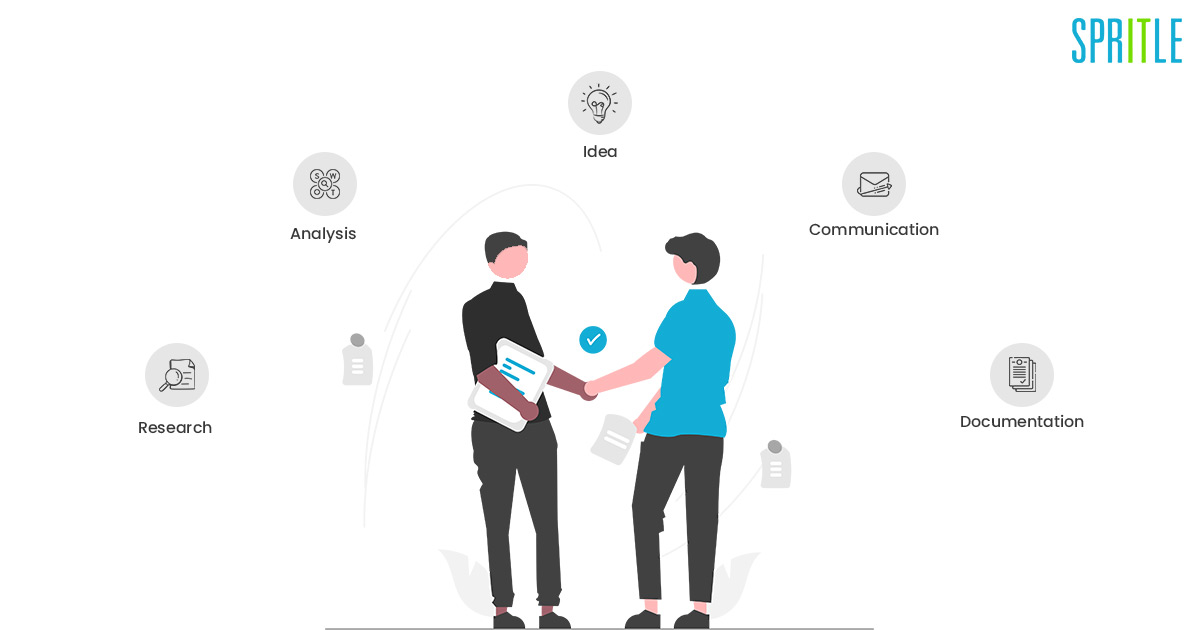
Why do we require an RFP document?
For those who aren’t aware of what an RFP stands for, it is called Request For Proposal. It is a type of document that contains detailed or brief information about the software that needs to be developed, which will be then sent out to various potential custom software development companies in your targeted area, to get a quote with commercials (features, cost & timeline) from them.
You can select a quote among them that addresses your needs & features of your software and also the one that suits your budget & time of development.
The RFP will also consist of various things such as the Unique Selling Point (USP), processing time, its effects, and so on. In layman’s terms, an RFP helps a vendor company gauge how valuable or how efficient their solution would be and the impact it would cause.
Who does the RFP analysis?
Generally, the Business Analyst is the person responsible for either analyzing the shared RFP document from the client or take up an initial discussion call and gather all the requirements from the client.
Do we take it up or We do not take it up?
RFP ANALYSIS:
- Given the heading at the top, it is quite obvious that one must check if the RFP manages to address the software requirements that the company needs.
- Multiple factors could affect this including the technology stack required or the budget, etc.
- Then comes the need to reply before the requested deadline so all this must be taken into consideration before anything moves ahead.
- This primarily also includes getting to know the requirements and how significant of an impact it would create. I mean, basically evaluating, whether the software requirement idea will be viable with the required tech stack, budget & time.
- The main purpose of the RFP analysis would be to prevent loopholes in the requirement that should not be addressed as a missed module by the client.
Answers and dates
- It is not wrong to pose any number of questions given that this is an investment and any number of plain questions must be addressed by the client.
- Then comes the part where you need the respective people to oversee the entire process and setting dates for such requirements and making the time for them is quite an important part of the procedure.
- This part may involve important parties as well as key collaborators so there must not be any hicks in the process.
Documentation, an art that needs to be mastered
- The documentation process is important as you have to identify, collect & record all the basic information that is needed to complete the software (i.e.) including the software specifications & hardware (if any).
- You can call the document a proposal wherein we propose the solution, features, cost & timeline for the RFP shared with the client.
- Let alone the above details, diagrams like the system’s architecture, user’s functional flow, system’s overall flow, etc. would be an added advantage to win the requirement.
- Next, you need to satisfy the Management who has to approve the proposal and allow it to move ahead.
- Finally comes the part where you have to ensure all your key points are put into focus and the story that you want to tell or display.
- This also includes putting all the summarised and qualified information onto a well-branded & sorted template that is good to display.
No to mistakes, Yes to approval
Before sending the final draft to the person who issued the RFP you must give it final proofreading and analyze what needs to be added or removed. Apart from that check it a couple of times so that there are no basic mistakes like spelling or alignment issues.
The main issue you need to check and confirm first is whether all the features required for a complete software are covered and nothing is missed. Else, you all know what will follow the next.
There you have it, the clear but simple way to how a new RFP has to be handled. Next time, keep this information in mind while handling the requirement of a client. This way you can win any deal.
Happy Documenting!
